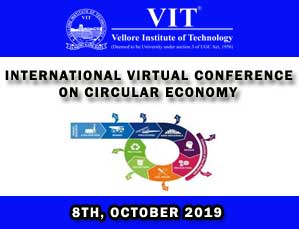- Home
- All Events
- International Virtual Conference on Circular Economy

International Virtual Conference on Circular Economy
- 08 Oct 2019
- Brochure
- Registration Link
Photo Gallery
News Gallery
The conventional understanding of economic activity is based on a linear model. Natural resources are extracted and transformed into products; the products are bought and used by consumers who, as soon as the products no longer fulfill their needs, throw them away. However, this model ignores the high economic, environmental and social costs related to the extraction, transformation and disposal of resources, and is therefore unsustainable in the long term. A Circular Economy (CE) offers an alternative model where the value of products, materials and resources is maintained for as long as possible and waste is significantly reduced or even eliminated. Keep resources in use for as long as possible, extract the maximum value from them whilst in use, then recover and regenerate products and materials at the end of each service life. Focused on “closing the loops”, a CE is a practical solution for living within our planetary boundaries. The transition towards a CE affects different policy areas, ranging from mobility, agriculture, land use and waste management, to business development and consumer education, concerning actors across all sectors and levels of governance. A CE is not something that any single institution or company can do alone. By its very nature, CE fosters connections across individual stakeholders and sectors. However, a transition to a CE is both a necessity and an opportunity, with the potential to offer long-lasting economic, environmental and social benefits.

